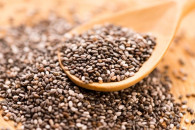LSM growth slows down to 7.4%
Output of big industries for Jul-Dec FY22 calculated with new base year of 2015-16

Pakistan’s big industries posted 7.4% growth in the first half of current fiscal year, which was more than double the rate under the old methodology that the government has now changed.
The Pakistan Bureau of Statistics (PBS) on Thursday released the first growth figures of Large-Scale Manufacturing (LSM) industries under the new base year of 2015-16.
The new base covers additional industries and the products they produce as compared to the old base of 2005-06.
The pace of growth in LSM industries eased to 7.4% in the July-December period of fiscal year 2021-22, the PBS reported. December was the fourth consecutive month when the growth rate was slower than the previous month.
In August 2021, the LSM industries grew 11.1%, according to the PBS.
On the basis of old methodology, the growth rate stood at only 3.4% in the first six months of current fiscal year.
Since large industries contribute heavily to revenue collection and job creation, any change in their growth impacts the government and business sentiment accordingly.
As against the total of 112 items with a cumulative weight of 70.3% that were used for the calculation of LSM growth under the old base year, the rebased LSM has been computed with 123 items having total weight of 78.4% that is derived from the industries census of 2015-16 with all existing data sources with the addition of PBS internal data source, according to the PBS.
The industrial sector’s coverage has also been increased from 15 to 22 under the new base.
With the increase in the size of LSM, the rebasing of economy also points to a drop in the share of overall job-intensive industrial sector, whose share has gone down significantly in the overall size of economy.
The share of LSM sector, which stood at 11.7% under the old base year, has now shrunk to a mere 9.3%, according to the results announced by the National Accounts Committee (NAC) in the previous month.
LSM has remained an important source of economic growth in Pakistan. Owing to the encouraging results of this sector in the previous fiscal year coupled with a low base effect, the government managed to show an overall 5.4% economic growth in 2020-21.
However, a constant decline in the share and growth of LSM may cause a lot of problems for the government that is struggling to create new jobs.
The government has targeted 4.8% economic growth in the current fiscal year. But the International Monetary Fund (IMF) has projected that Pakistan’s economic growth would stand at 4%, which is a decent rate but nearly half of what is required to create jobs for all new entrants into the market.
Read: LSM growth slows down further
LSM data is collected from three different sources. Data collected by the Oil Companies Advisory Committee (OCAC) showed that 36 items of industries registered a growth of 0.1% in the first half of current fiscal year.
The Ministry of Industries, which monitors 11 products, reported a 3.2% increase in output during the July-December period.
Similarly, the provincial bureaus reported a 4.1% growth in the output of 76 goods, stated the PBS. Earlier, the provincial bureaus were monitoring the output of 65 items.
The industries that posted growth in the first six months included textile, which grew less than 1%.
The textile sector weight has been reduced from nearly 21% to 18.2% in the LSM index but still any movement in the segment significantly impacts the overall LSM sector growth. It is the largest sector in the LSM index.
The output of food and beverages increased 0.2% during the first half of FY22. PBS has started monitoring separately the output of food and beverages sectors.
Coke and petroleum products also showed a nominal growth, along with chemicals. The output of automobile sector increased 1.8%. Iron and steel sector saw a growth of 0.8% while the manufacturing of leather products remained flat.
Paper and board, engineering products and wood products output growth remained negligible.
There was a dip in the output of fertiliser plants as the government struggled to provide gas to urea producers to enable them to operate at full capacity. This negates the Ministry of Industries’ claim that urea output was the highest in the current fiscal year.
Pharmaceutical, rubber and electronics output also contracted during the first half of current fiscal year, according to the PBS.
Published in The Express Tribune, February 18th, 2022.
Like Business on Facebook, follow @TribuneBiz on Twitter to stay informed and join in the conversation.



















COMMENTS
Comments are moderated and generally will be posted if they are on-topic and not abusive.
For more information, please see our Comments FAQ